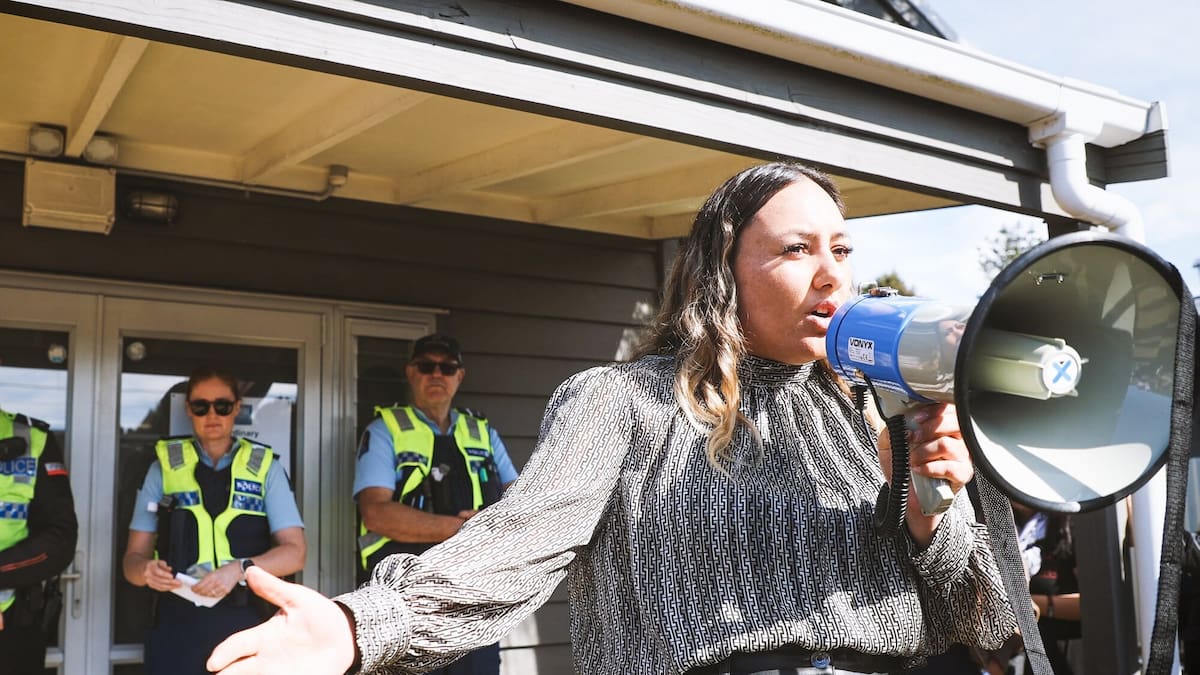The Labour Government abolished the provision for binding referendums in 2021. In 2023, the National-led coalition brought the referendums back. The law now requires a binding referendum before any Māori ward can be introduced. And it’s retrospective: all councils that have created such wards since 2020, or have resolved to do so, were required to hold a referendum during this month’s council election or remove them.
The debate over the wards
The wards have often been a flashpoint for debate – there were protests and a tense meeting when Kaipara Council voted to remove theirs in August 2024.
Te Pāti Māori MP Mariameno Kapa-Kingi last year described the decision to remove the wards as “racist, targeted attack on Māori, for being Māori”.
“The argument is that Māori wards will be the demise of democracy. To remove Māori wards is an assault on Te Tiriti, the only reason a democracy inclusive of Pākehā could ever exist,” she wrote in the Herald.
Mariameno Kapa-Kingi. Photo / Mark Mitchell
“Disestablishing Māori wards further undermines councils’ autonomy in their rohe. This rings true for the Far North district of Te Tai Tokerau. This rohe alone covers over 6000 square kilometres, a whenua where Māori make up nearly 50% of the population,” she said.
Act leader David Seymour, on the other hand, said he would be voting against the wards if he could (there are no wards in Auckland where he lives – read why here).
“For some reason there’s been a really corrosive obsession in New Zealand with a person’s race,” Seymour said at the time.
”It’s not really obvious why some people’s background is more important than others.
Act leader David Seymour. Photo / Sylvie Whinray
”I’m not really sure why we take a period of time 200 years ago and decide to privilege some humans over others,” he said.
Read here about some big results and tight races across the election – and here about some of the more colourful candidates.

